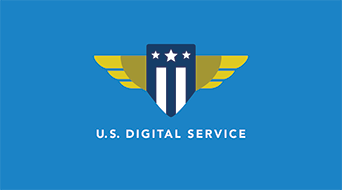Conference Program
A new Rosenfeld Media conference astride the intersection of design and the public sector.
In this interactive session, Sam Proulx, accessibility evangelist at Fable, will draw from experience as a person with a disability, and from Fable’s thousands of hours of research experience, to answer all of your questions about conducting prototype reviews with people with disabilities. What design systems work best? What disabilities can participate in prototype reviews out of the box, and what types of disabilities might need special adaptations? What information should a prototype contain, to get the best feedback and engagement from people with disabilities? How can you, within the public sector, learn to better shift left, and involve people with disabilities as early as possible in the design process, and why should you? We’ll also have plenty of time for your own questions! If you’ve been wanting to conduct prototype reviews that involve people with disabilities, but weren’t quite sure where to begin, don’t miss this session!
Theme 1: Civic Design Today
What is our shared definition of civic design? We’ll take a clear-eyed, global look at the role and influence of design in local, state and provincial, and national governments. We’ll see how scale and location influence the delivery of accessible, inclusive, and responsive design solutions. We’ll define what civic design is in 2021, reflect on and learn from the work of our community, and establish a foundation for the practice for years to come.
What is our shared definition of civic design? We’ll take a clear-eyed, global look at the role and influence of design in local, state and provincial, and national governments. We’ll see how scale and location influence the delivery of accessible, inclusive, and responsive design solutions. We’ll define what civic design is in 2021, reflect on and learn from the work of our community, and establish a foundation for the practice for years to come.
In his opening keynote, Christian Bason, CEO, Danish Design Centre, will share insights from his nearly two decades of work with civic design as an approach to human-centred innovation and sustainable change. Based on his experience from running MindLab, the Danish government’s innovation team, as well as academic research and hands-on design projects with public organisations, Christian will assess the past and present of civic design. He will suggest that while it may seem there is a clash between the empathy, creativity and formgiving in design versus the objectivity, analytics and rationality of bureaucracy, they can be reconciled. The world needs both stability and change, and civic designers who can embrace both perspectives have the potential of transforming how we run government to the benefit of people, society and the planet. Christian will end his presentation by proposing some future directions for civic design that can unleash its full potential in the years to come.
The promise of good civic design may only be realized when it is equally good for everyone. In large and complex systems, we may never fully achieve this. But it is the work of civic designers to persist and lead change. The importance of this commitment is abundantly clear around Diversity, Equity, Inclusion, and Access. On his first day in office, President Biden issued Executive Order 13985 On Advancing Racial Equity and Support for Underserved Communities Through the Federal Government. Learn how service designers are embracing this catalyst for change at different levels of the federal ecosystem.
Namahn has been working on digital inclusion for the Digital Transformation Office of the Belgian federal government for over a year. Since 2020, they have invested in understanding user needs to help administrations improve their services for and with the citizen. In a multidisciplinary team, the team researched the challenges of digital inclusion and explored actionable avenues for federal administrations. In 2019, a study showed that 42% of Belgian citizens didn’t use any online or digital public service. Applying design techniques, the team shaped a profound understanding of people at risk, their struggles, and how governmental services can become more inclusive. In this talk, Yalenka and Marie will outline how they conducted interviews with citizens at risk of digital exclusion during a lockdown and what they learned from those. Additionally, they’ll detail the current experiments that they are launching to ensure public services are conceived in an inclusive way.
Break
How do you design engaging communications experiences when the audience you serve faces obstacles to connect?
The National Center for Post-Traumatic Stress Disorder (NCPTSD) strives to provide Veterans with tangible resources and information to help with mental health and seeking treatment. Historically, there’s been a significant portion of the Veteran population NCPTSD has not been able to reach and they needed to better understand their audience’s pain points and how to connect effectively. Over the past two years, we’ve taken a human-centered approach to empathize with and understand the Veteran experience to better reach and communicate with them.
COVID-19 arrived slowly and then quickly for governments across the world. By the end of March 2020, lockdowns and states of emergencies had been declared. Join Gordon Ross as he reflects on his time spent with the British Columbia (BC) Government DDN (digital delivery network), working on the COVID-19 response over the first 12 months of the pandemic. Learn how the government mobilized talent, how decision-making and situational awareness was achieved, and whether the innovations prompted by COVID-19 led to lasting change or costly chaos.
The Head of Design at the Ministry of Culture of Jalisco is the only public entity in Mexico working toward establishing public policy for design. The department has introduced design concepts such as prototyping and iteration in the Government through the design of open calls, funds, and exhibition. They have pioneered platforms such as Plataforma Activa de Diseño, or Pad Jalisco, (trad. Active Platform for Design) a space for design projects involving subjects that are connected to Government goals, including climate change, social equality and gender perspective. Through Plataforma Activa de Diseño, designers can receive funds and mentorship from other parts of the Government in order to improve their projects and introduce design in other public sectors.
In addition to briefly discussing their most important projects, Kassim Vera, the Head of Design, and Sofía Delsordo, the department’s Programme Leader, will talk about the main challenges in developing public policy for designers from a highly complex environment and share their experience navigating bureaucracy, legislation, and social vision of the role of the Government in the development of arts and creative economies.
Break
The events and experiences of the last several years have exposed gaps in our awareness of – and practice around – connecting with people across the broadest range of human perspectives. Too often, as we’ve built services and complementary products, we have bypassed the hard questions around identity. To improve design decision-making, many organizations are using new approaches to ask a broader range of questions to more people. We’ll discuss strategies for how to connect with the broadest range of people as well as how to represent insights that drive more inclusive design decision-making.
This session is a panel discussion about what community-centered design looks like in local government. We’ll talk about why it’s important to collaborate with communities, the conditions that are required to practice community-centered design, and what it looks like in action.
Break
While the use of design in government is on the rise, there is a question about whether this way of working in government can be sustained in the long-term. If you are interested in building design capacity in government, do you start with a dedicated team of experts, or with grassroots frontline staff? Using examples from city governments from around the world, this presentation will explore the pros and cons to each approach, its impact on sustainability, and the additional factors that help embed design in government (i.e.: senior leadership buy-in, dedicated resources, storytelling, measuring impact, etc.).
Speed Networking
Who says you can’t network at virtual conferences? Here’s your chance to meet peers from all over the world. We’ll bring the introductions and fun ice-breaker questions; you just bring yourself.
Who says you can’t network at virtual conferences? Here’s your chance to meet peers from all over the world. We’ll bring the introductions and fun ice-breaker questions; you just bring yourself.
Theme 2: Civic Design Tools and Mindsets
What mindsets and tools do we need as individuals and in our organizations for civic design to be successful? We’ll explore how civic designers are evolving organizational mindsets through relationships and systemic solutions. We’ll see approaches for embedding accessibility and inclusivity from the start. We’ll learn how governments can buy better design services, and how design industry and policy professionals can become effective civic designers.
What mindsets and tools do we need as individuals and in our organizations for civic design to be successful? We’ll explore how civic designers are evolving organizational mindsets through relationships and systemic solutions. We’ll see approaches for embedding accessibility and inclusivity from the start. We’ll learn how governments can buy better design services, and how design industry and policy professionals can become effective civic designers.
Building a service-oriented culture is hard in any organisation. It is especially challenging for a government agency tasked with the regulation, health and safety of the labour force in the country. Yet, the Ministry of Manpower in Singapore succeeded in becoming one of the leaders and champions of service excellence. How did they do it? Their story is pieced together in this behind the scenes look at the design of their award-winning website.
Do you think you have great people skills? How do you know? Lots of us are never taught critical behaviors that build trust with others. In the government, trust is often the currency that helps build momentum and gets things done. In this panel with experienced professionals from the U.S. Digital Service and moderated by Melissa Eggleston, we will discuss what works well in building trust in government. You’ll learn from past mistakes of others so you can avoid similar missteps. Get practical direction to improve your people skills with your team and all those partners you need on your side.
Break
Did you know that the SUS creates biases in your research, affecting one in five people? That’s right! People with disabilities, especially those who use assistive technology, are not considered by most of the questions in the SUS. As a designer for the public sector, this could lead to you making design decisions that don’t take into account 20 percent of the visitors to your website.
Through Open Cities, Granicus was able to expand on our ability to provide resident-centered digital experiences in local governments around the world. Our platform is the public sector’s leading digital customer journey platform that has helped thousands of local governments transform their websites, digital forms, and service delivery experiences.
Join Irina Tikhonova and Kari Dietrich in this session focused on the importance of starting small when elevating user experiences. We discuss how to focus on user journeys, involve the right stakeholders, and push for data-driven and human-centered policy changes.
When designing into inherently complex government services, civic designers must take a systemic approach. Too often service design focuses on public-facing and sometimes frontline staff-facing interventions, thereby placing the burden of successful service delivery on unempowered shoulders. As service delivery is the byproduct of many entities, interventions must systemically target all policy “layers”, such as operations and policy, to be successful.
In this presentation, the Public Policy Lab team will share their public policy ‘layer cake’. Besides reflecting their affinity for baked goods, it’s a systems design framework for creating interventions at all levels of a public service, while also creating opportunities for equity.
- Who has power?
- What about the key performance metrics our government agencies monitor?
- Why are existing approaches problematic?
- Where are the roots of these issues, and when did things change?
- How do we get started with more humanity-centered approaches?
While usability testing is an often overlooked part of design in the frenzied race to get technology to market, it’s absence is especially problematic when it comes to civic-focused products and services. Even when designers want to test, options are often limited to “professional testers” or personal networks – far from the actual users they’re hoping to help. Testing with a diverse group of end users and stakeholders is the only surefire way to make sure what gets designed works for everyone, but the approach needs to be thoughtful, sensitive and impactful.
Since launching in early 2019, GRIT has delivered more than 20 such inclusive usability testing engagements with partners in the public, private and nonprofit sectors and we’re eager to share our insights with others who endeavor to engage diverse, underrepresented communities in the design of their civic products and services. Using case studies and lessons from our trove of civic design engagements, we’ll help take the guesswork out of inclusively testing your next design.
Break
Forms are the front door to government services—for everything from getting a job to a COVID-19 vaccine—yet their current design creates systemic barriers for LGBTQ+ people.
Forms shape how our government understands, prioritizes, and addresses the needs of its people, but for LGBTQ+ communities, many government forms include demographic questions that are unnecessarily invasive, inadequate, and unclear in their purpose. This deepens mistrust, creates barriers to critical benefits, and prevents collection of data needed to provide effective, equitable services.
In this talk, U.S. Digital Service team members will share lessons learned from direct engagement with an intersectional group of LGBTQ+ nonprofit organizations and researchers and statisticians across government and standards organizations as well as an examination of underlying policies and tech systems. We’ll provide a framework for navigating sexual orientation and gender identity, as a first step toward designing equitable forms for all.
The events and experiences of the last several years have exposed gaps in our awareness of – and practice around – connecting with people across the broadest range of human perspectives. Too often, as we’ve built services and complementary products, we have bypassed the hard questions around identity. To improve design decision-making, many organizations are using new approaches to ask a broader range of questions to more people. We’ll discuss strategies for how to connect with the broadest range of people as well as how to represent insights that drive more inclusive design decision-making.
Agencies and organizations spend an enormous amount of time putting together RFP documents that can scare away agencies, especially small ones. If we want to increase talent for civic projects, we need to commit to crafting more inclusive and effective RFPs and procurement processes.
Bellweather Chief Strategy Officer Emily Lessard will share lessons learned from working both within and outside government agencies. Her knowledge spans responding to 143 RFPs and reading countless others. She will share ten lessons for writing more engaging and equitable RFPs, along with a link to download a sample file to get you started.
Break
There is an outpouring of designers and researchers who are interested in building their practice in the civic space; and there’s a wealth of public service emerging. There are also many policy and program professionals who are starting to use design as part of their jobs. Through their global perspectives, panelists will share personal trajectories, what it is like working inside or alongside government and tips for succeeding as a civic designer, researcher or leader. We’ll also explore how government entities and contractors might rethink recruiting talent and building an inclusive pipeline to civic design.
Trivia Night!
Join us for a Geeks Who Drink Pub Quiz! We’ll have four rounds of the finest trivia in the land, safe and socially distant in a virtual format. You’ll team up with your colleagues and play against other colleagues on topics such as pop culture, music, history, food and drink, and some other surprises!
All you need is your web browser to play. Links and instructions will be provided two days before the trivia event so you can join in the fun!
Join us for a Geeks Who Drink Pub Quiz! We’ll have four rounds of the finest trivia in the land, safe and socially distant in a virtual format. You’ll team up with your colleagues and play against other colleagues on topics such as pop culture, music, history, food and drink, and some other surprises!
All you need is your web browser to play. Links and instructions will be provided two days before the trivia event so you can join in the fun!
Starting out with a ten-minute live demo from an expert screen reader user, Samuel Proulx will introduce you to not only how they work, but the thought processes behind using the Internet with a screen reader. What are some of the most important things to take into account when attempting to construct a mental model of a screen reader user? How do these effect the way you think about designing for accessible, public use? How can civic designers learn to move beyond thinking visually, to create designs that work for everyone? After this introduction, the floor will open to your questions! If you have burning questions about how people who are blind use the Internet, or what design patterns work best and why or why not, this is your chance! Ask any question at all in an open, safe learning environment.
Theme 3: Civic Futures
Where is civic design headed? We’ll knit together insights we heard from the current state of civic design with a look out over a hundred-year trajectory to explore how we might rise to meet the challenges faced by current and future generations. We’ll consider ways of working, ways of being, and necessary considerations for safeguarding our physical and digital selves in order to create the futures we want.
Where is civic design headed? We’ll knit together insights we heard from the current state of civic design with a look out over a hundred-year trajectory to explore how we might rise to meet the challenges faced by current and future generations. We’ll consider ways of working, ways of being, and necessary considerations for safeguarding our physical and digital selves in order to create the futures we want.
Civic design has achieved much success in recent decades by focusing on delivering better public services and designing interactions between government and residents. However, to meet the complex challenges humanity and earth face, civic design must evolve so its full potential as a practice and community can be harnessed to address today’s wicked problems, such as mental health, inequality, and climate change.
Join us as we explore the paradigm shifts and practices we believe are urgently needed to maximize the impact and relevance of civic design: from human-centered to life-centered; from design thinking to complexity thinking; from ego-systems to eco-systems… and beyond.
The last year-and-a-half of crises demonstrate why researchers and designers must anticipate and plan for trauma as it emerges in our work (and our lives). This session is an introduction to trauma-informed design frameworks. Through real-life examples, attendees will see how concepts from care fields, like social work, are integrated into the research and design process to center the safety and empowerment of the individuals and communities we serve. Attendees will leave the session with an understanding of how they can begin to explore using trauma-informed frameworks in their own practices.
Have you ever been a part of a participatory process or use of a participatory method only to find that it fell short of any real shift of power dynamics? Have you ever compared notes with another participatory designer only to find out their definition of participatory design is different than your own? Have you faced opposition from your organization in practicing design in a more participatory way? What does it even mean to practice participatory design in the civic space, for people in our society to be engaged in the practice of designing ways in which our societies can flourish?
Join us, come into the conversation, and see what Victor Udoewa has to say about such experiences, the different definitions of participatory design and how participatory design can actually be used to reinforce hierarchies. One way he has found to dismantle that system is to practice radical participatory design. He will share what that means, how it looks, and how you can begin moving in that direction along with a direct challenge to our community of designers in regards to our own power.
Break
Through GovDelivery, Granicus sends over 17 billion e-mails every year on behalf of over 5,500 state, local, and federal government agencies. As the first Fedramp approved communication platform of its kind, Granicus is uniquely positioned to develop insight and innovation based on the voice of the residents we serve. In this session, Granicus leaders Angy Peterson and Bob Ainsbury will share a vision of a personalized public digital experience– and the impact that could be possible through the power of data and human centricity.
Pick up a newspaper and every day you see an onslaught of headlines about disaster and crisis. It would seem that the 21st century is starting out as a perpetual crisis. The civic warrior in each of us asks this small question: “How might I make a change? What can I do to make a difference?” During this presentation we dig deeper into this idea—venture beyond the question with tactics to explore the design of a more resilient community.
Break
Staying connected and learning from your teammates on a distributed team or in a highly siloed organization can be hard. Written knowledge-bases (if you have them) can be dry or become out of date, and replicating hallway conversations where you can bump into new people or share stories (and commiserations!) with coworkers can feel out of reach in a virtual environment. Despite the obstacles, I’ve found that cultivating an engaged remote community and fostering peer-to-peer knowledge sharing is possible. This talk will cover real-world tactics I use at the US Digital Service to engage communities and empower people to be resources to each other, whether they’re in the same room or thousands of miles apart.
IFTF’s Ethical OS Toolkit has been used by many organizations and agencies across the civic sector, including the California state legislature, the United States Conference of Mayors, and other local governments, to bring more foresight and long-term thinking to policy decisions about new technologies. In response to high demand from government entities, and with support from the Tingari-Silverton Foundation, the IFTF Governance Futures Lab has developed this Playbook for Ethical Tech Governance. Adapted from the original Ethical OS, the Playbook will equip civil servants with the skills and tools to proactively resolve ethical dilemmas emerging from the constantly evolving landscape of new technology and new social and political dynamics. It’s intended to help those working in government, or leaders in the public sector, to make better long-term decisions by increasing their foresight capacity, allowing them to develop future-facing regulatory structures that help them anticipate the worst consequences of technology before they happen.
In this session, Ilana Lipsett will present Institute for the Future’s Playbook for Ethical Tech Governance, a decision-making guide for governments and leaders who are charged with regulating change and mitigating risk, all while encouraging innovation. The guide was designed to help safeguard against both intended and unintended consequences of techno-social shifts. This session will include an overview of the Playbook, along with a live demo of how to apply these principles and put them into action using a Decision Tree worksheet that accompanies the guide.
Break
Join us to reflect one what we’ve shared and learned over the past three days at this first gathering of the global civic design community. We’ll consider together where our field is headed and our hopes for the future. Come to share your reflections and charge up on how you’ll take what you’ve learned back out into your work and practice.





